Chapter 3
Focusing on iPhoto
In This Chapter
![]() Importing pictures from your hard drive or digital camera
Importing pictures from your hard drive or digital camera
![]() Organizing images with iPhoto
Organizing images with iPhoto
![]() Tweaking the appearance of photographs
Tweaking the appearance of photographs
![]() Sharing photos with your friends
Sharing photos with your friends
For years, the Macintosh has been the choice of professional photographers for working with digital images — not surprising, considering the Mac’s graphical nature. Apple continues this tradition with iPhoto, its photography tool for the home user that can help you organize, edit, and even publish your photographs. (It sports more features than a handful of Swiss army knives.) After you shoot your photos with a digital camera, you can import them into iPhoto, edit them, and publish them. You’re not limited to photos that you take yourself, either; you can edit, publish, and organize all kinds of digital image files. You can even create a photo album and use the iPhoto interface to order a handsome soft-bound or hard-bound copy shipped to you, or create a slideshow that you can upload to YouTube.
In this chapter, I walk you through an overview of what iPhoto can do. After that, I give you a brief tour of the controls in iPhoto so that you can see what features are available to you, including those for managing, printing, and publishing your photos.
Note: Apple will replace iPhoto with a new photo catalog and editing application called Photos in early 2015. After Apple releases Photos, a bonus chapter on the new application will be available on Dummies.com, as well as the author’s website at www.mlcbooks.com.
Delving into iPhoto
Figure 3-1 shows most of the major controls iPhoto offers. (Other controls appear automatically when you enter different modes; I cover them in upcoming sections.)
These controls and sections of the window are covered in more detail in the following sections. For now, here’s a quick rundown of what you see when you launch iPhoto:
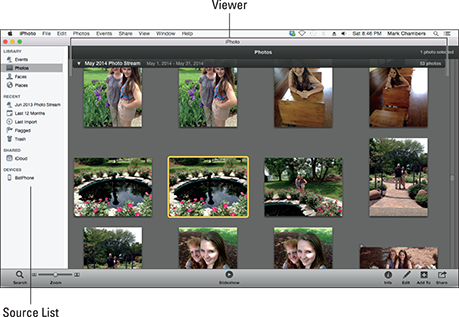
Figure 3-1: iPhoto greets you with an attractive window.
- Source list: This list of image locations determines which photos iPhoto displays.
- You can choose to display either your entire image library or just the last set of digital images you downloaded from your camera.
- You can create new albums of your own that appear in the Source list, which makes it much easier to organize your photos.
- Photos can be grouped by Events (when they were taken), Faces (who appears in the photos), and Places (where photos were taken).
- You can view the photos you’ve shared online using Facebook, Twitter, and Flickr (and those from your other Macs and iOS devices via Photo Stream, if you’re using the Apple iCloud feature).
- You can create books, calendars, cards, and slideshows.
 Right-click in any empty part of the Source list to add a new blank album, book, or slideshow to your Source list.
Right-click in any empty part of the Source list to add a new blank album, book, or slideshow to your Source list. - Viewer: This pane displays the images from the currently selected photo source.
 You can drag or click to select photos in the Viewer for further tricks, such as assigning keywords and image editing.
You can drag or click to select photos in the Viewer for further tricks, such as assigning keywords and image editing. - Full Screen: Click this button at the upper-right corner of the window to switch to a full-screen display of your photos. In full-screen mode, the Source list disappears, and both images and Events appear as thumbnails. You can double-click a thumbnail to view the image (or the contents, if it’s an Event) using your Mac’s entire screen real estate. You can also use the controls I discuss later in this chapter for chores such as sharing and editing images; the toolbar is still available at the bottom of the screen.
- Search: Click the button with the magnifying glass icon to display the Search box, where you can locate photos by specific criteria. Just click in the box and start typing to search by description and title, or even Faces and Places (which I cover later in the chapter).
- Zoom: Drag this slider to the left to reduce the size of the thumbnails in the Viewer. This allows you to see more thumbnails at one time, which is convenient for quick visual searches. Drag the slider to the right to expand the size of the thumbnails, making it easier to differentiate details between similar photos in the Viewer.
- Play Slideshow: Select an Event, album, book, or slideshow in the Source list (or select multiple images in the Viewer). Then click this button to start a full-screen slideshow using those images.
- Info: Click this button to display information on the currently selected photos (or the item selected in the Source list).
- Edit: Click this button to edit the currently selected photos. (I cover editing in depth later in the chapter.)
- Add To: Click this button to add the currently selected photos to an existing album, slideshow, book, card, or calendar.
- Share: Click this button to share the currently selected photos on Flickr, Twitter, or Facebook. Choose iCloud to send the selected photos to your iPhone, iPad, or iPod touch using iCloud (they’ll appear in the Photo Stream albums on those devices). You can also order prints, attach the photos to a text message, or email them. (Heck, if you’ve got a printer connected to your Mac, you can even produce your own glossies.)
Working with Images in iPhoto
Even a superbly designed image display and editing application such as iPhoto would look overwhelming if everything were jammed into one window. Thus, Apple’s developers provide different operational modes (such as editing and book creation) that you can use in the one iPhoto window. Each mode allows you to perform different tasks, and you can switch modes at just about any time by clicking the corresponding toolbar button.
In this section, I discuss three of these modes — import, organize, and edit — and what you can do when you’re in them.
Import images 101
In import mode, you’re ready to download images directly from your digital camera — as long as your specific camera model is supported in iPhoto. To find many of the cameras that are supported in iPhoto, visit the Apple iPhoto support page:
www.apple.com/macosx/upgrade/cameras.html
And you’re not limited to cameras, of course. You can also import photos from a memory card reader (such as the SDXC card slot sported by many current Mac models) or even a Kodak PhotoCD.
Follow these steps to import images:
- Connect your digital camera to your Mac.
Plug one end of a USB cable into your camera and the other end into your computer’s USB port, and prepare your camera to download images.
- Prepare your camera to download images.
The procedure for downloading images varies by camera, but the process usually involves turning on the camera and choosing a “Download” or “PC” mode. Check your camera’s user guide for more details.
- Launch iPhoto.
Your Mac probably launches iPhoto automatically when your camera is detected, but you can always launch iPhoto manually by clicking its icon on the Dock (or double-clicking it in your Applications folder).
- Type an Event name for the imported photos, such as 21st Birthday Party or Godzilla Ravages Tokyo.
Depending on your birthday parties, this could be the same Event.
- (Optional) To have iPhoto automatically separate images into different Events based on the date they were taken, select the Split Events check box.
- Click the Import All button to import your photographs from the camera.
The images are added to your Photo Library, where you can organize them as you want.
 To select specific images to import, hold down the
To select specific images to import, hold down the  key and click each desired photo; then click Import Selected instead of Import All.
key and click each desired photo; then click Import Selected instead of Import All.Depending on the camera, iPhoto may also import video clips.
- Specify whether the images you’re importing should be deleted from the camera afterward.
If you don’t expect to download these images again to another computer or another device, you can choose to delete the photos from your camera automatically. This saves you a step, frees space for new photos, and helps eliminate the guilt that can crop up when you nix your pix. (Sorry; I couldn’t resist.)
“What’s that about an Event, Mark?” After you download the contents of your digital camera, those contents count as a virtual Event in iPhoto — based on either the date you imported them or the date they were taken. For example, you can always display the last images you imported by clicking Last Import. If you want to see photos from your son’s graduation, they appear as a separate Event. (Events and Last Import both appear in the Source list.) Think about that. It’s pretty tough to arrange old-fashioned film prints by the moment in time they document, but iPhoto makes it easy for you to see which photos are part of the same group. I explain more about Events in the next section.
Organize mode: Organizing and sorting your images
In the days of film prints, you could always stuff another shoebox with your latest photos or buy another sticky album to expand your library. Your digital camera, though, stores images as files instead, and many folks don’t print their digital photographs. Instead, you can keep your entire collection of digital photographs and scanned images well ordered and easily retrieved by using iPhoto’s organize mode. Then you can display them in a slideshow, email them, print them, use them as Desktop backgrounds, or burn them to an archive disc.
A new kind of photo album
The most familiar method of organizing images in iPhoto is the album. Each album can represent any designation you like, be it a year, a vacation, your daughter, or your daughter’s ex-boyfriends. Follow these steps:
- Create a new album.
You can choose File⇒New Album, press
 +N, or right-click in the Source list and choose New Album. (Figure 3-2 shows the right-click menu.) If you’ve selected any image thumbnails in the Viewer, they are added to the new album automatically. If no photos are selected, you get a funky dialog asking whether you’re sure you want to create an empty album, and you must click Continue.
+N, or right-click in the Source list and choose New Album. (Figure 3-2 shows the right-click menu.) If you’ve selected any image thumbnails in the Viewer, they are added to the new album automatically. If no photos are selected, you get a funky dialog asking whether you’re sure you want to create an empty album, and you must click Continue.iPhoto creates the new album entry in the Source list as an editing text box.
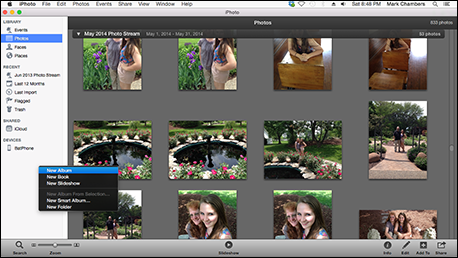
Figure 3-2: Adding a new album in iPhoto.
- Type the name of your new photo album into the text box.
- Press Return.
iPhoto also offers a special type of album called a Smart Album, which you can create from the File menu. (For even faster action, press Option+![]() +N.) If you’re familiar with the Smart Folders you can use within the Finder and the Smart Playlists within iTunes (see Book III, Chapter 2), you’ve figured out this one already. A Smart Album contains only photos that match certain criteria you choose, including the keywords and rating you assign your images. Other criteria include text in the photo filenames, the dates the images were added to iPhoto, and any comments you might have added (as well as camera-specific data, such as ISO and shutter speed). Now here’s the really nifty angle: iPhoto automatically builds and maintains Smart Albums for you. It adds new photos that match the criteria and deletes those you remove from your Photo Library (and also removes the photos that no longer match the Smart Album’s criteria)! Smart Album icons carry a gear symbol in the Source list.
+N.) If you’re familiar with the Smart Folders you can use within the Finder and the Smart Playlists within iTunes (see Book III, Chapter 2), you’ve figured out this one already. A Smart Album contains only photos that match certain criteria you choose, including the keywords and rating you assign your images. Other criteria include text in the photo filenames, the dates the images were added to iPhoto, and any comments you might have added (as well as camera-specific data, such as ISO and shutter speed). Now here’s the really nifty angle: iPhoto automatically builds and maintains Smart Albums for you. It adds new photos that match the criteria and deletes those you remove from your Photo Library (and also removes the photos that no longer match the Smart Album’s criteria)! Smart Album icons carry a gear symbol in the Source list.
You can drag images from the Viewer into any album you choose. For example, you can copy an image to another album by dragging it from the Viewer to the desired album in the Source list.
To remove a photo that has fallen out of favor, follow these steps:
- In the Source list, select the desired album.
- In the Viewer, select the photo you want to remove (click it).
- Press Delete.
To remove an entire album from the Source list, just click it in the Source list to select it — in the Viewer, you can see the images it contains — and press Delete. (Alternatively, right-click the offending album, and choose Delete Album.)
To rename an album, click the entry under the Albums heading in the Source list to select it, and click again to display a text box. Type the new album name, and press Return.
Arranging stuff by Events
As discussed earlier, an Event is a group of images you shot or downloaded at the same time. iPhoto assumes that those images belong together (which is usually a pretty safe assumption). Figure 3-3 shows some of the Events I’ve created in my iPhoto collection.

Figure 3-3: Events help you organize by what happened, not just when it happened.
Try moving the pointer over an Event thumbnail in the Viewer. You see that iPhoto displays the date range when the images were taken, as well as the total number of images in the Event. Ah, but things get really cool when you move the pointer over an Event with many images: The thumbnail animates and displays all the images in the Event! (Why didn’t I think of this? This is the future.)
To display the contents of an Event in the Viewer, just double-click the Event thumbnail. To return to the Events thumbnails, click the All Events button at the top of the Viewer.
Working with Faces and Places
iPhoto includes two organizational tools: Faces and Places. These two categories appear in the Library section of the Source list.
First, tackle Faces. (Ouch. Don’t literally tackle anyone’s face, dear reader.) Faces is a sophisticated recognition system that automatically recognizes human faces within the photos you add to your Library. (I don’t know whether it works well with pets, but you can try.) Naturally, you have to identify — tag — faces before iPhoto can recognize them.
To tag a face, follow these steps:
- In the Source list, click the Photos item to display your image library.
- In the Viewer, click the photo with a person you want to tag.
The photo is selected, as indicated by the yellow border.
- Click the Info button on the iPhoto toolbar at the bottom of the window.
iPhoto displays the Info pane, as shown in Figure 3-4.
- In the Faces section of the Info pane, click the Add a Face link.
Note that iPhoto indicates each person’s face in the photo with a label. If a face has already been tagged, the label matches the person’s face.
- Choose a name option, depending on whether the face is recognized, unrecognized, or incorrectly identified:
- If iPhoto recognizes the face correctly and the name matches the person, click the check mark to confirm the tag.
- If the face is unrecognized (labeled as Click to Name), click the label to open a text box and type the person’s name.
- If the face is incorrectly identified, click the X at the right of the text box and enter a new name.
If the name appears on a Contacts contact card — or is recognized as one of your Facebook friends — you can click the matching entry that appears to confirm the identity. Wowzers!
To delete an unnecessary Face recognition box, hover the pointer over the box, and click the X button that appears at the top-left corner of the box.
 iPhoto might not recognize the face if the person is turned at an angle to the camera or is in a darker area of the photo. If so, click the box border and drag the box over the person’s face. If necessary, you can resize the box using the four handles at the box’s corners. Now you can click the label and type the person’s name.
iPhoto might not recognize the face if the person is turned at an angle to the camera or is in a darker area of the photo. If so, click the box border and drag the box over the person’s face. If necessary, you can resize the box using the four handles at the box’s corners. Now you can click the label and type the person’s name. - After you finish identifying faces in the photo, click the Info button to hide the Info pane.
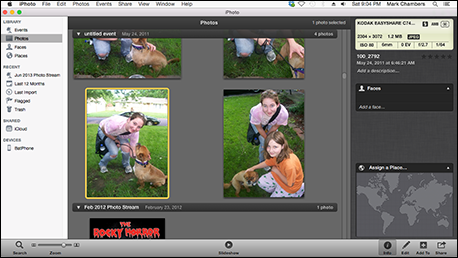
Figure 3-4: Adding another mug to my collection of Faces. (That doesn’t sound right either.)
After you tag an image, it appears in your Faces collection, which you can view by clicking the Faces entry in the Source list. You can double-click a portrait in your Faces collection to see all the images that contain that person.
As you might expect, the more photos you add for a specific person, the better iPhoto gets at recognizing that person!
Places makes it easy to track the location where photos were taken, but it requires a digital camera that includes GPS tracking information in the image metadata for iPhoto to do so without your help. (This is a relatively new feature for digital cameras, so older models are unlikely to support GPS tracking. Naturally, both the iPhone and the 3G/4G iPad support this feature.) Places also requires an Internet connection because it uses Google Maps.
Click the Places entry in the Source list to display a global map, with pushpins indicating where your photos were taken. You can switch the Places map between terrain and satellite modes, or choose a hybrid display. If you’re familiar with Google Maps, these settings are old friends.
If you click a specific photo (that includes location information) to select it and then click the Info button, you see a close-up map of the location where the photo was taken.
Alternatively, click the text Location buttons at the top of the map to display a character-based browser, where you can click country, state, city, and place names.
No matter which view mode you choose, clicking a pushpin or location displays the images taken in that area.
Organizing with keywords
“Okay, Mark, albums, Events, Faces, and Places are great ideas, but there has to be a way to search my collection by category!” Never fear, good Mac owner. You can also assign descriptive keywords to images to help organize your collection and locate certain pictures fast. iPhoto comes with a number of standard keywords, and you can create your own as well.
To illustrate, suppose you’d like to identify your images according to special events in your family. Birthday photos should have their own keyword, and anniversaries deserve another. By assigning keywords, you can search for Elsie’s sixth birthday or your silver wedding anniversary (no matter what Event or album they’re in), and all related photos with those keywords appear like magic! (Well, almost like magic. You need to choose View⇒Keywords, which toggles the Keyword display in the Viewer.)
iPhoto includes a number of keywords that are already available:
- Favorite
- Family
- Kids
- Vacation
- Birthday
- RAW
- Photo Booth
- Photo Stream
- Movie
- Check mark
To assign keywords to images (or to remove keywords that have already been assigned), select one or more photos in the Viewer. Choose Window⇒Manage My Keywords or press ![]() +K to display the Keywords window, as shown in Figure 3-5.
+K to display the Keywords window, as shown in Figure 3-5.

Figure 3-5: Add keywords to these selected images.
Click the buttons for the keywords you want to attach to the selected images to mark them. Or click the highlighted keyword buttons you want to remove from the selected images to disable them.
Digging through your library with keywords
Behold the power of keywords! To sift through your entire collection of images by using keywords, click the Search button on the toolbar at the bottom left of the iPhoto window, click the magnifying glass icon at the left side of the Search box, and choose Keyword from the pop-up menu. iPhoto displays a pop-up Keywords panel, and you can click one or more keyword buttons to display just the photos that carry those keywords.
Speaking of ratings …
Playing favorites by assigning ratings
Be your own critic! iPhoto allows you to assign any photo a rating of anywhere from zero to five stars. I use this system to help keep track of the images I feel are the best in my library. Select one or more images, and assign a rating using one of the following methods:
- Choose Photos⇒My Rating, and then choose the desired rating from the pop-up submenu.
- Hover the pointer over the photo, and click the More button at the lower-right corner of the thumbnail; then click the desired star rating in the menu that appears.
- Use the
 +0 through
+0 through  +5 shortcuts.
+5 shortcuts.
Sorting your images just so
The View menu provides an easy way to arrange your images in the Viewer by a number of different criteria. Choose View⇒Sort Photos, and click the desired sort criteria from the pop-up submenu. You can arrange the display by date, keyword, title, or rating. If you select an album in the Source list, you can also choose to arrange photos manually. This means that you can drag and drop thumbnails in the Viewer to place them in the precise order you want them.
Edit mode: Removing and fixing stuff the right way
Not every digital image is perfect — just look at my collection if you need proof. For shots that need a pixel massage, iPhoto includes a number of editing tools you can use to correct common problems.
The first step in any editing job is to select in the Viewer the image you want to fix. Then click the Edit button on the iPhoto toolbar to display the Edit mode controls at the right side of the window, as shown in Figure 3-6. Now you’re ready to fix problems, using the tools I discuss in the rest of this section. (If you’re editing a photo that’s part of an Event, album, Faces, or Places, note the spiffy scrolling photo strip at the bottom, which allows you to switch to another image to edit from the same grouping.) Note that iPhoto always displays the Quick Fixes tab when you first enter Edit mode.
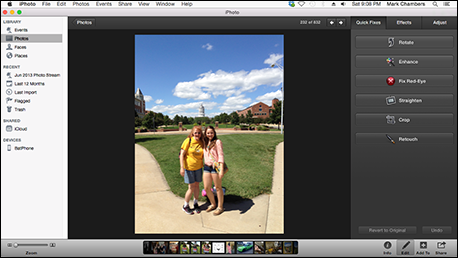
Figure 3-6: iPhoto is now in edit mode. Watch out, image problems!
While you’re editing, you can use the Next and Previous buttons at the left of the tab button to move to the next image in the current group (or back to the previous image).
When you’re finished with Edit mode, click the (wait for it) Edit button again to return to the Viewer.
Rotating tipped-over shots
If an image is in the wrong orientation and needs to be turned to display correctly, click the Rotate button to turn it once in a counterclockwise direction. Hold down the Option key while you click the Rotate button to rotate in a clockwise direction.
Crop till you drop
Does that photo have an intruder hovering around the edges of the subject? You can remove some of the border by cropping an image, just as folks once did with film prints and a pair of scissors. (We’ve come a long way.) With iPhoto, you can remove unwanted portions from the edges of an image; it’s a great way to get Uncle Milton’s stray head (complete with toupee) out of an otherwise perfect holiday snapshot.
Follow these steps to crop an image:
- From the Quick Fixes tab, click the Crop button.
- Select the portion of the image you want to keep.
In the Viewer, click and drag the handles in the corners of the rectangle to outline the part of the image you want. Whatever is outside this rectangle disappears after the crop is completed.
 When you drag a corner or edge of the outline, a semi-opaque grid (familiar to amateur and professional photographers as the nine rectangles from the Rule of Thirds) appears to help you visualize what you’re claiming. (Check it out in Figure 3-7.)
When you drag a corner or edge of the outline, a semi-opaque grid (familiar to amateur and professional photographers as the nine rectangles from the Rule of Thirds) appears to help you visualize what you’re claiming. (Check it out in Figure 3-7.)You can expand the outline to the image’s full dimensions at any time by clicking the Reset button.
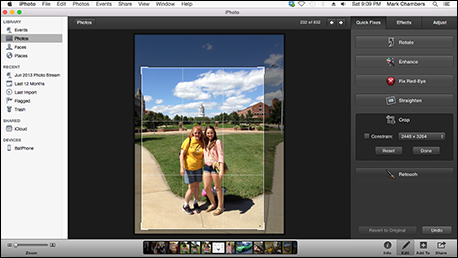
Figure 3-7: Select the stuff you want to keep in your photo.
- (Optional) Choose a preset aspect ratio.
You might want to force your cropped selection to a specific aspect ratio, such as 4×3 or 16×9 for a widescreen desktop background, or 4×6 or 5×7 to match the dimensions of photo paper. If so, click select the Constrain check box, and select that ratio from the Constrain pop-up menu.
- Click the Done button.
Don’t forget that you can use iPhoto’s Undo feature if you mess up and need to try again. Just press
 +Z.
+Z.
Straightening what’s crooked
Was your camera slightly tilted when you took the perfect shot? Never fear! Click the Straighten button, and drag the Angle slider to tilt the image in the desired direction. Click the Done button to return to Edit mode.
Enhancing images to add pizzazz
If a photo looks washed out, click the Enhance button to increase (or decrease) the color saturation and improve the contrast. Enhance is automatic, so you don’t have to set anything — but be prepared to use Undo if you’re dissatisfied with the changes.
Removing rampant red-eye
Unfortunately, today’s digital cameras can still produce the same “zombies with red eyeballs” as traditional film cameras. Red-eye is caused by a camera’s flash reflecting off the eyes’ interior surface, and it can occur with both humans and animals. (I’m told pets get green-eye or blue-eye, but iPhoto can handle them, too!)
iPhoto can remove that red-eye and green-eye and turn frightening zombies back into your family and friends. Click the Fix Red-Eye button, and select a demonized eyeball by clicking in the center of it. (If the Red-Eye circular pointer is too small or too large, drag the Size slider to adjust the dimensions.) To complete the process, click the Done button.
Retouching like the pros
The iPhoto Retouch feature is perfect for removing minor flecks or lines in an image (especially those you’ve scanned from prints). Click Retouch, and notice that the pointer turns into a circle; as with the Red-Eye tool, you can drag the Size slider to change the size of the Retouch pointer. Just drag the pointer across the imperfection and click Done when you’re finished touching up. Don’t forget to take a moment and marvel at your editing skill!
Effects tab: Switching to black-and-white or sepia
Ever wonder whether a particular photo in your library would look better as a black-and-white (grayscale) print? Or perhaps an old-fashioned sepia tone in shades of copper and brown? Just click the Effects tab, which offers nine different effects you can apply to the photo. You can also make “one-click” changes to your photo from the Effects tab, including lightening and darkening an image or enhancing the contrast.
Adjust tab: Tweaking photo properties manually
Click the Adjust tab to perform precise manual adjustments to brightness and contrast (the light levels in your image) as well as attributes such as sharpness, shadow, and highlight levels. To adjust a value, make sure nothing’s selected in the image, and drag the corresponding slider until the image looks the way you want. Click the Close button to return to Edit mode.
Producing Your Own Coffee-Table Masterpiece
Book mode unleashes what I think is probably the coolest feature of iPhoto: the chance to design and print a high-quality bound photo book. First you complete an album by editing all the images just the way you want and placing in the album all the photos you want to include in your book. iPhoto can send your images as data over the Internet to a company that prints and binds your finished book. (No, they don’t publish For Dummies titles, but then again, I don’t get high-resolution color plates in most of my books, either.)
At the time of this writing, you can order many different sizes and bindings. The largest size is a 13-by-10-inch hardcover book with 20 double-sided pages for about $50 (extra pages cost $1.50 each). Smaller sizes include an 8½-by-11-inch softcover book with 20 double-sided pages for about $20 and a hardcover 8½-by-11-inch album with 20 double-sided pages for about $30 (shipping included for both). Extra pages can be added at $0.70 and $1.00 a pop, respectively.
iPhoto can also produce and automatically order calendars and cards (both the postal and greeting varieties) using a process similar to the one I describe in this section for producing a book. Who needs that stationery store in the mall anymore? (You can even order old-fashioned prints from the Share toolbar menu.)
To create a photo book, follow these steps:
- Click the desired album or Event in the Source list to select it.
Make sure no individual photos are selected in the Viewer. This way, iPhoto uses all the images in the chosen location.
- Click the Add To toolbar button, click Book from the pop-up menu, and choose Create Book.
- Select the type of book using the Binding buttons (Hardcover, Softcover, and Wire-bound) at the top of the window; for book size, use the Size buttons (Small, Large, and Extra-Large) at the left side of the window.
Your choices determine the number of pages and the size of the book.
- Choose a theme.
Use the left- and right-arrow keys to cycle through the theme selections. The theme you choose determines both the layout scheme and the background graphics for each page. To change the color scheme for a theme, click one of the color swatches at the right side of the window.
- Click Create.
iPhoto adds your new book project under the Projects heading in the Source list (using the name of the album or Event where the photos were located), and you see the controls shown in Figure 3-8.
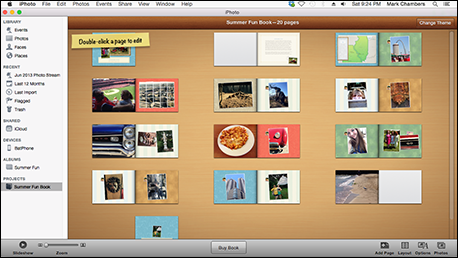
Figure 3-8: Preparing to publish my own coffee-table masterpiece.
In Book mode, the Viewer displays a collection of thumbnail images, each of which represents a portion of your book — the front cover, internal pages, or back cover. To display the photos you selected, click the Photos button on the toolbar at the bottom right of the window. You can drag any image thumbnail into one of the photo placeholders to add it to the page.
 It’s easy to switch to another theme at any time by clicking the Change Theme button at the top right of the window.
It’s easy to switch to another theme at any time by clicking the Change Theme button at the top right of the window. - (Optional) Rearrange the page order to suit you by dragging the thumbnail of any page from one location to another.
 If you prefer a book without page numbers, right-click any page and choose Show Page Numbers to toggle it off. (The Show Page Numbers menu item turns gray to indicate it’s disabled.)
If you prefer a book without page numbers, right-click any page and choose Show Page Numbers to toggle it off. (The Show Page Numbers menu item turns gray to indicate it’s disabled.) - (Optional) To change the look of the cover or a single page, click the cover or a page to select it; then click the Layout button on the toolbar to change the color and design layout for that element.
Clicking a design thumbnail automatically updates the page display.
- Double-click a page to edit captions and short descriptions.
Click any of the text boxes in the page display, and begin typing to add text to that page. Note: Some themes don’t have caption or description text boxes.
After you’re finished editing, click the All Pages button at the top of the window to return to your full spread.
- (Optional) To add pages to your book, click the Add Page button on the toolbar.
As mentioned earlier, the price of additional pages varies according to the size and type of binding you choose.
- To view the book at any time, right-click any page and choose Preview Book.
After a short wait, the OS X Preview application opens, and you can scroll through the contents of your book (or even print a quick copy). To close the Preview window, choose Preview⇒Quit Preview.
- When you’re ready to publish your book, click the Buy Book button at the bottom center of the window.
- In a series of dialogs that appears, iPhoto guides you through the final steps to order a bound book.
Note that you are asked for credit card information, so have that plastic ready.
Putting Photo Stream to Work
iPhoto includes the Photo Stream feature that automatically shares the photos you take among your Macs, your PCs, and any Apple device running iOS 5.0 or later. (This includes your iPhone 4 or later, your second- or later-generation iPad, iPad mini, and your iPod touch.) Click Share, and choose Photo Stream. iPhoto automatically sends the selected images to all compatible devices over your Wi-Fi connection. (Note that all devices using Photo Stream must be configured using the same Apple ID.)
To turn on Photo Stream, choose iPhoto⇒Preferences and click the iCloud toolbar button. Then select the My Photo Stream check box.
Optionally, you can also specify whether iPhoto should automatically import Photo Stream photos to you library. Furthermore, you can specify whether iPhoto should automatically upload the most recent 1,000 photos to Photo Stream for sharing with your other devices.
You can also choose to share specific photos by using shared photo streams, which can be turned on from the iPhoto Preferences dialog. Choose iPhoto⇒Preferences, click the iCloud tab on the toolbar, and select the Photo Sharing check box.
To subscribe to a shared photo stream invitation from another person, click the iCloud entry in the Source list, click the desired shared stream entry, and click Accept.
To create your own shared photo stream, select the images you want to share, click the Share button on the toolbar, click the iCloud button, and click the New Photo Stream menu item that appears. iPhoto prompts you for the email addresses of the folks you want to invite to your shared photo stream. After you have entered each email address, click the Share button in the dialog to start the ball rolling.
Emailing Photos to Aunt Mildred
iPhoto can help you send your images through email by automating the process. The application can prepare your image and embed it automatically in a new message. (In fact, you don’t even have to open Apple Mail, because everything is done within iPhoto.)
To send an image through email, follow these steps:
- Select the images you want to send.
 You can select up to ten images if you hold down the
You can select up to ten images if you hold down the  key while clicking.
key while clicking. - Click the Share button on the toolbar, and then click the Mail menu item.
The layout shown in Figure 3-9 appears.
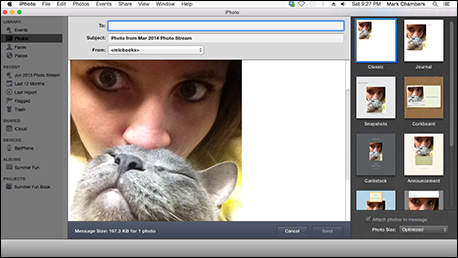
Figure 3-9: Preparing to send an image through Apple Mail.
- Customize the email as desired:
- Choose a theme for your message: The theme includes a background image and matching font selection.
- Specify the size of the images: Select a size from the Photo Size pop-up menu, which can save considerable downloading time for recipients who are still using a dial-up connection.
 Most ISP (Internet service provider) email servers don’t accept an email message larger than 5MB or 6MB, so watch that Message Size display at the bottom of the window. (In fact, the encoding necessary to send images as attachments can double the size of each image!) If you’re trying to send a number of images and the size goes over 5MB, you might have to open the Photo Size pop-up menu and choose a smaller size (reducing the image resolution) to get them all in a single message.
Most ISP (Internet service provider) email servers don’t accept an email message larger than 5MB or 6MB, so watch that Message Size display at the bottom of the window. (In fact, the encoding necessary to send images as attachments can double the size of each image!) If you’re trying to send a number of images and the size goes over 5MB, you might have to open the Photo Size pop-up menu and choose a smaller size (reducing the image resolution) to get them all in a single message.- Add the images as attachments to the message: Select the Attach Photos to Message check box.
- When you’re satisfied with the total file size and the theme, click within the To field and enter the recipient’s email address. Then click the Subject field, and enter a title for the message. To add your own text to the message, double-click the theme’s default text and begin typing.
- When everything is perfect, click Send. iPhoto takes care of the rest!
